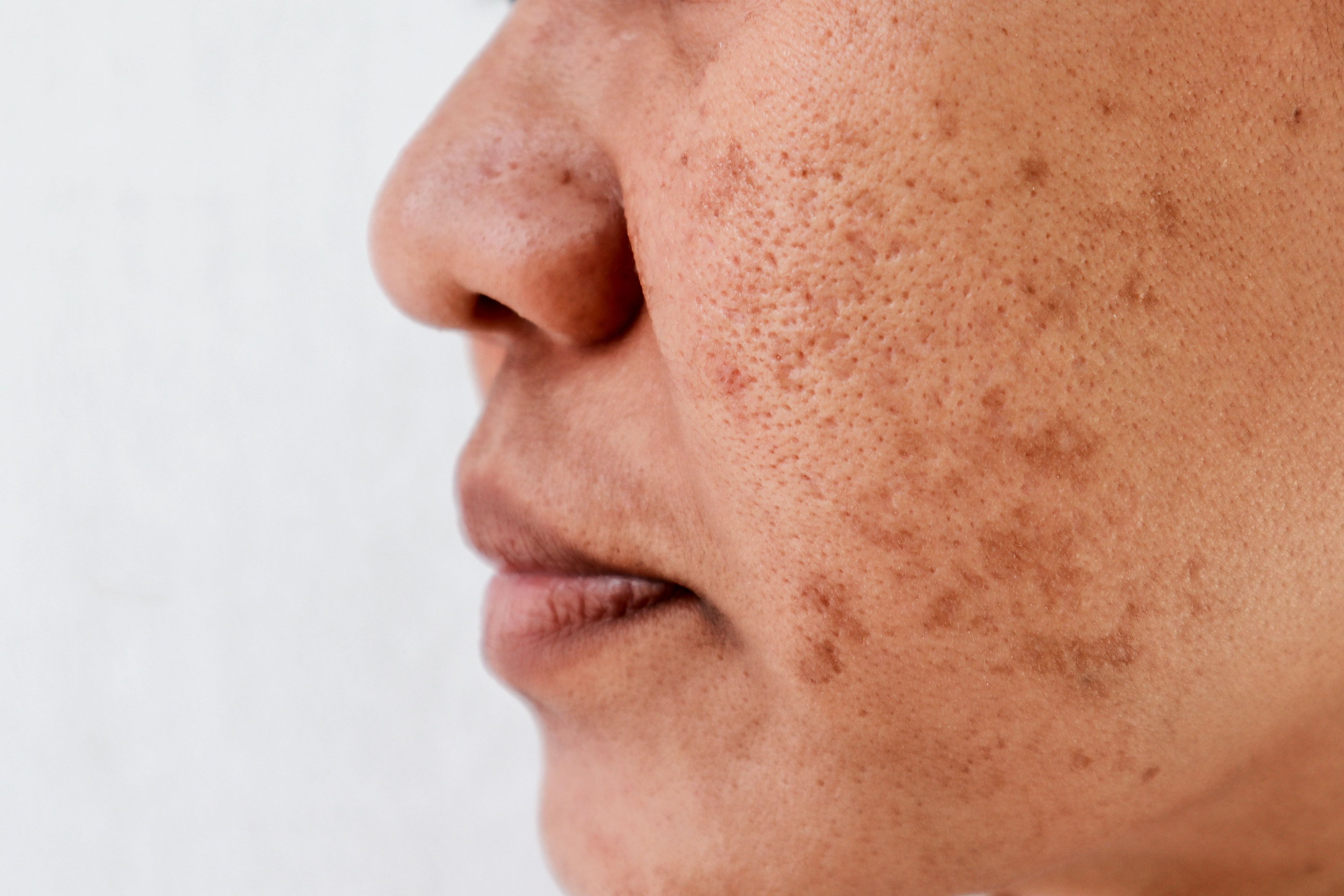- Case-Based Roundtable
- General Dermatology
- Eczema
- Chronic Hand Eczema
- Alopecia
- Aesthetics
- Vitiligo
- COVID-19
- Actinic Keratosis
- Precision Medicine and Biologics
- Rare Disease
- Wound Care
- Rosacea
- Psoriasis
- Psoriatic Arthritis
- Atopic Dermatitis
- Melasma
- NP and PA
- Skin Cancer
- Hidradenitis Suppurativa
- Drug Watch
- Pigmentary Disorders
- Acne
- Pediatric Dermatology
- Practice Management
- Prurigo Nodularis
- Buy-and-Bill
Article
Microneedling Combined With Glutathione Promising in Treatment of Melasma
Author(s):
A split-face study found that combination therapy proved more efficacious than microneedling alone.
When compared to microneedling alone, microneedling combined with glutathione proved to be more effective and promising in improving signs of melasma, offering increased and accelerated results.
kritiya/AdobeStock

In a split-face comparative study,1 researchers sought to assess the efficacy of monotherapy versus combination therapy in reducing the appearance offacial melasma pigment. They cited prior research demonstrating the efficacy of glutathione in melasma, coupled with a lack of research evaluating both microneedling and glutathione separately in clinical settings.
Between June 2020 and September 2021, researchers at Sohag University Hospital in Egypt recruited patients from the departments of andrology, dermatology, and venereology. Study participants were female patients ages 18 years and older who presented with confirmed bilateral symmetrical epidermal melasma through the conduction of a Wood’s light examination. Researchers also collected relevant patient demographic data, including collecting a complete medical history, dermatologic exam, and family history.
Patients were excluded from participation if they had other types of melasma (such as dermal or mixed), current pregnancy or active nursing, current use of depigmenting medications, and more.
At baseline, researchers calculated Hemi- m MASI to evaluate efficacy of treatment. This was evaluated on each side of participants’ faces, in addition to digital photographs which were evaluated by expert dermatologists. Hemi- m MASI was analyzedand digital photographs were taken before each treatment session.
All participants’ faces were disinfected with alcohol before they received a topical Pridocaine anesthesia. Microneedling was performed on all lesions affected by melasma across both sides of the face, whereas glutathione was localized to lesions on the right side of the face only. This treatment was repeated every 2 weeks for a total of 6 sessions.
Following the procedure, researchers required participants to avoid face washing for 24 hours and sun exposure for 7 days, while remaining conscious of sun exposure and sun protection factor product use.
Dermatologists assessing participants’ digital photographs evaluated them on a scale of:
- No response (no improvement)
- Mild response (<25% improvement)
- Moderate response (25% to 49% improvement)
- Good response (50% to 74% improvement)
- Very good response (>75% improvement)
Participants also completed a short assessment of patient satisfaction (SAPS) wherein they ranked their satisfaction with the procedure while also reporting adverse effects.
While researchers noted improvements in Hemi- m MASI score after each session, they found greater improvement on the side of the face receiving combination therapy. For example, the average Hemi- m MASI score of patients prior to the first treatment session was 4.04 ± 1.92 on the monotherapy side of the face and 4.11 ± 1.99 on the combination therapy side. Before session 2, the average score was 3.97 ± 1.91 on the side receiving monotherapy and 3.86 ± 1.85 on the side receiving combination therapy.
The overall difference in Hemi- m MASI score from baseline to the last treatment session was also more significant in combination therapy. With microneedling alone, participants had an average 1.75 ± 0.82 difference in Hemi- m MASI score from baseline to the last session. With microneedling and glutathione combined, participants had an average 2.24 ± 1.11 difference in Hemi- m MASI score from baseline to the last session.
46.92% improvement was noted in monotherapy, while 55.17% improvement was noted in combination therapy. On average, more participants experienced good improvement (50% to 74% improvement) with respect to combination therapy than monotherapy. Researchers noted a 62.07% patient satisfaction rate, with 24.14% more participants describing themselves as being very satisfied with results.
“This current study demonstrated more effectiveness of combined therapy (microneedling with glutathione) than monotherapy (microneedling alone) in treatment of melasma because of their synergistic effects in decreasing the skin hyperpigmentation problems,” study authors wrote. “Addition of topical agents with the microneedling procedure potentiates its effects and accelerates the treatment outcomes. More studies are needed with large sample size to confirm this point of research.”
Reference
- Mohamed M, beshay YM, Assaf HM. Microneedling with glutathione versus microneedling alone in treatment of facial melasma: split‐face comparative study. J Cosmet Dermatol. Published online June 14, 2023. doi:10.1111/jocd.15834






